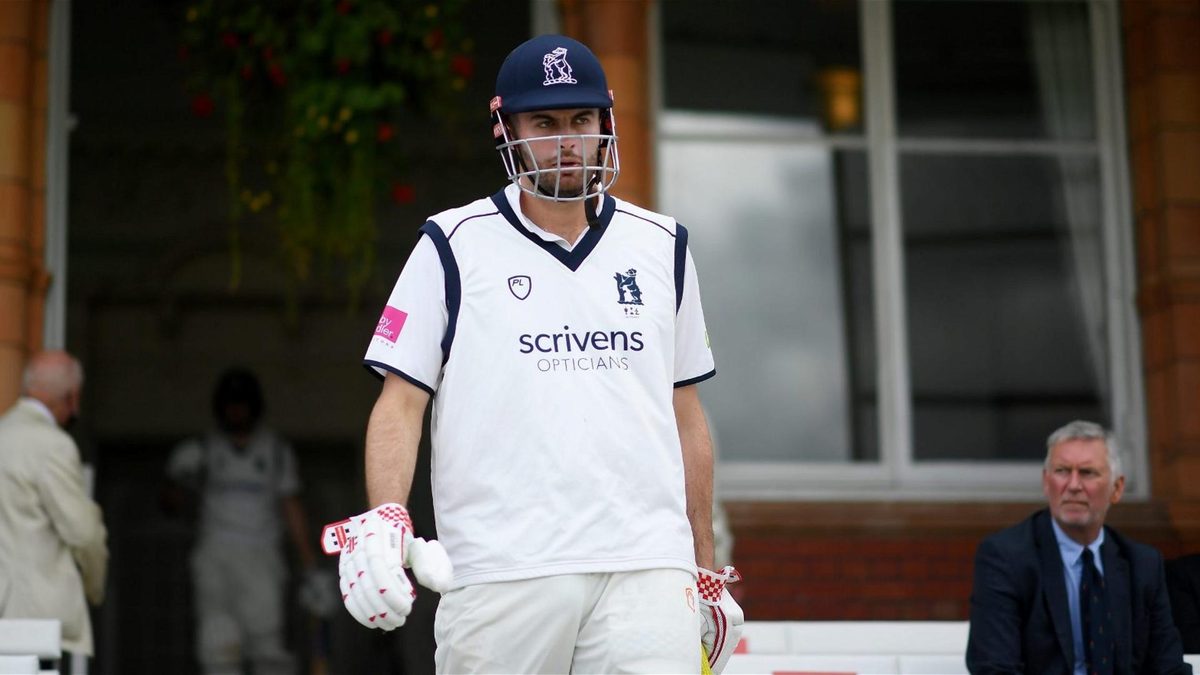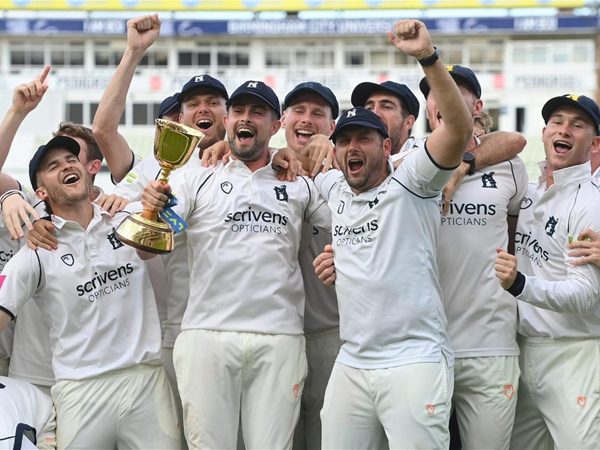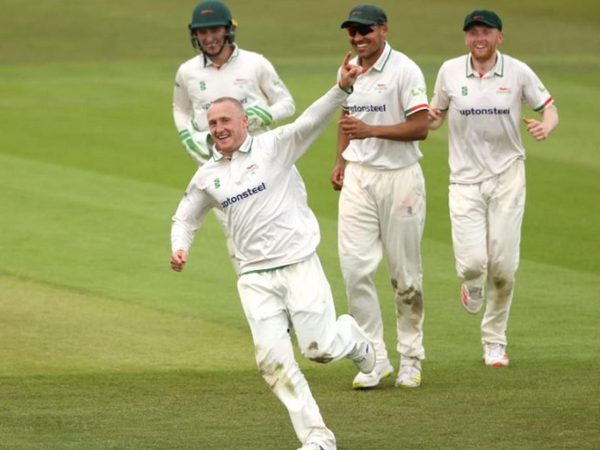
Unless you were being coyly derogatory, you wouldn’t describe much of what Dom Sibley does as ‘eye-catching’.
And yet as Warwickshire chased quick runs in their final County Championship game against Somerset, needing victory for the title and with both teams having racked up more than 350 in the first innings, he unfurled a range of strokes that any of England’s white-ball superstars would have been proud of. He came down the track to the seamers to flick over midwicket, reverse-swept Jack Leach for four, and raced to his half-century off 67 balls. He fell for exactly 50, without a statement score but having done his job, with Warwickshire securing victory late on the fourth day. And really, that’s been the story of Sibley’s run in for Warwickshire. Six times in nine innings he has reached 45, but he’s only managed a top score of 57. But whether he’s batted for a declaration, as against Somerset, or batted to save a game, as against Lancashire, or batted to lay a platform, as also against Somerset, or just batted, as in the Bob Willis Trophy final, he has set about whatever task has been put in front of him gamely and capably.
And it’s largely, at least until this year, been the story of his England career too. At the end of last summer, his Test average sat at 38, with Sibley facing more than 100 balls per dismissal. While he was never hurrying the scorers, there were stretches where he showed at least a second gear, with his taking apart Keshav Maharaj at Cape Town after reaching his hundred particularly notable. He looked, at that point, a player who could grind with the best of them, putting into practice Chris Silverwood’s vague template of ‘big first innings runs’. A year later, he found himself out of the side, his average 10 points lower, his dropping more an act of mercy than cruelty.
It’s important to separate the Sibley of 2021 from that which came before. When a player has as cumbersome a technique as Sibley’s, it can be hard to tell if he’s out of form or just doing something weird. But this summer, worn down by a winter on worn wickets, he looked shot of confidence, and like a player who had tried, mid-Test, to heed all the unheralded advice he had received.
Last year, he looked close to cracking being a Test opener of England, perhaps the hardest role in the game. His technique looked strange, but it served him well enough against a variety of skilful bowling attacks across a decent period of time. A stretch away might have been all he needed. If he’s back in form and at that level, there’s little reason not to go back to him, at least as next in line should another opener be needed soon. Given how England’s tours of Australia tend to go, it feels a likely scenario.
And yet there is something about Sibley that a section of England fans just hates. Any mention of the possibility of him touring Australia this winter, is met not just with disapproval, but derision.
Dom Sibley has four half-centuries in nine innings for Warwickshire since being dropped by England.
Enough to book himself a place on the plane to Australia?#BWTFinal pic.twitter.com/OfgVy28OOt
— Wisden (@WisdenCricket) September 29, 2021
Partly it’s down to that technique. Players who bat by the coaching manual are given more leeway to fail, their struggles more easily ascribed to form and fluctuations. If you try to do something different and don’t succeed, it’s a sign that your new method doesn’t work. Even as Steve Smith, Marnus Labuschagne and Fawad Alam have shown the virtues of finding your own way, the old orthodoxy has still held out in some corners.
But it’s also partly because of what the idea that Sibley is among England’s best eight or so batters says about them as a Test side. There’s a hidden school of thought based on the principle that England should be able to field a top five of batters all capable of averaging above 40, with the No.6 spot saved for the all-rounder or the young talent who could, at some point, enter that top five. Anyone who, after a sufficient go, fails to get near this mark, is to be deemed not good enough, and whoever the next in line is gets a go, and so on until England’s Test Batting Lineup reveals itself.
There have been times when this has been true. Through the 2000s, it seemed as if every batter given a debut made a fifty in their first outing. But this is not where England are right now, as much as those barracking for call-ups for Jake Libby or Rob Yates wish it were. After Joe Root, Ben Stokes’ 37.04 is England’s next-best marker. And while there are flaws and faults in the domestic structure acting as a barrier, there are wider causes too. It’s not as if England are a hopeless Test side, as much as their fans often paint them as such. Before this summer, England would win plenty away, and had gone unbeaten at home since 2014. All this with just one Test batter, in some eyes, worthy of the name.
The calibre of Test bowling among all countries has perhaps never been as high, and its surfaces rarely as challenging. It’s not just that a recalibration is needed of what a ‘good’ Test record looks like; a reimagining of what a functioning Test batting line-up resembles is required too.
Cheteshwar Pujara shows the future, which is not something often true of Cheteshwar Pujara, a shell suit of a cricketer, previously outdated and all of a sudden back in fashion. Rarely can a player have averaged less than 35 with the bat and yet laid the foundations for a series victory, as he did in Australia last winter. He acted as India’s arch-enabler, wearing Australia’s unchanged attack down over a session, an innings, a series, first allowing an untroubled blockathon at Sydney, and then an unthinkable heist at Brisbane.
Sibley might not be in the same class as Pujara. But an average just above 30, a strike-rate just below, and three half-centuries. Are these not the kind of numbers England and he could hope for? And if he were to achieve them, is it not the kind of grind that Joe Root, Ollie Pope and the rest would cherish?







